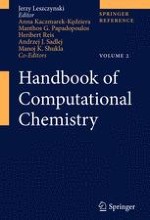
2012 | OriginalPaper | Buchkapitel
From Quantum Theory to Computational Chemistry. A Brief Account of Developments
verfasst von : Lucjan Piela
Erschienen in: Handbook of Computational Chemistry
Verlag: Springer Netherlands
Aktivieren Sie unsere intelligente Suche, um passende Fachinhalte oder Patente zu finden.
Wählen Sie Textabschnitte aus um mit Künstlicher Intelligenz passenden Patente zu finden. powered by
Markieren Sie Textabschnitte, um KI-gestützt weitere passende Inhalte zu finden. powered by